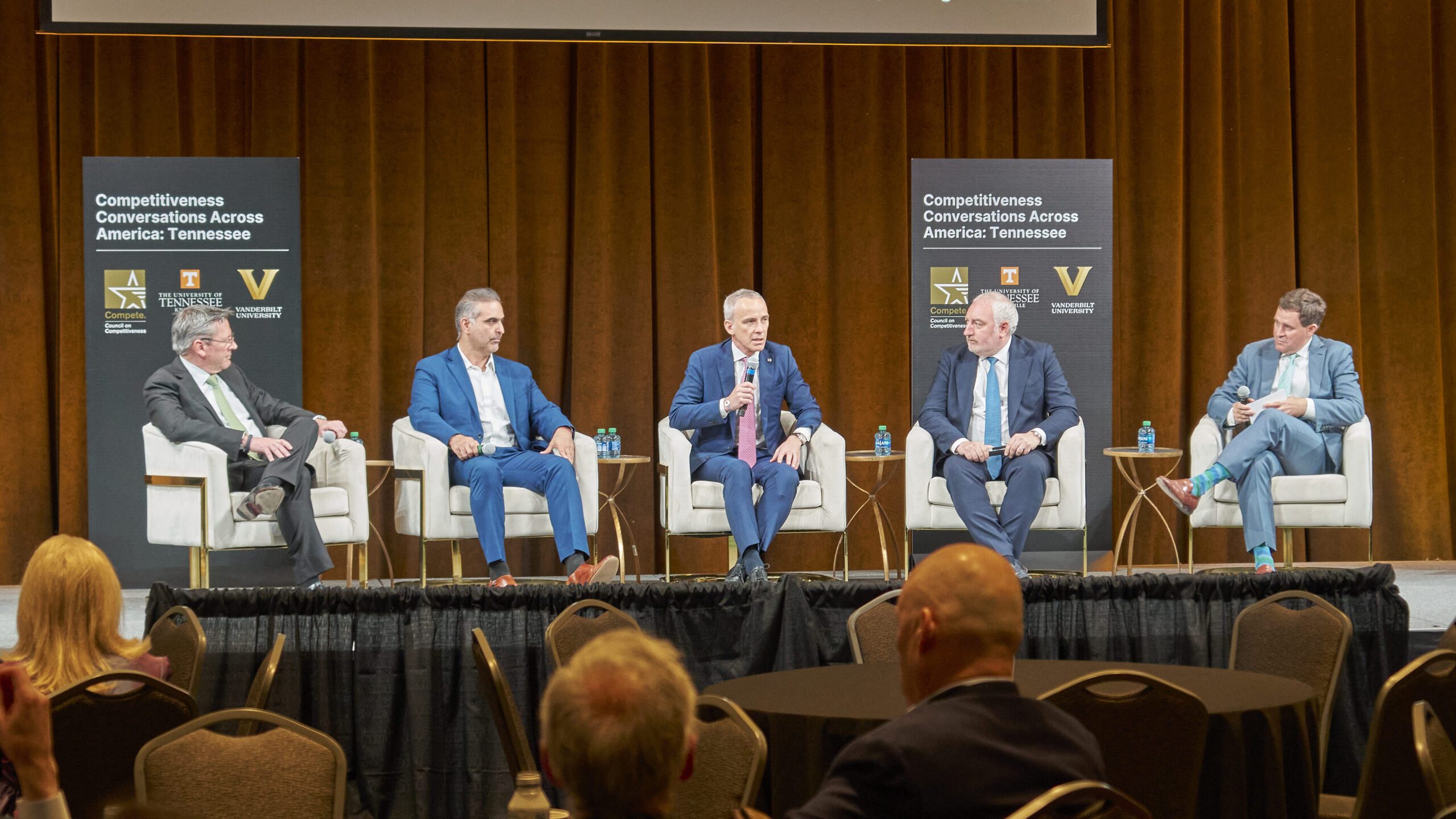Overview
What are the key factors to building an innovative economy? Kicking off the Tennessee Competitiveness Conversation, global business leaders with major operations in Tennessee explored the key pillars of innovation as articulated in the Council’s “National Commission on Innovation & Competitiveness Frontiers”—highlighting both key challenges and opportunities for Tennessee, particularly within the automotive and mobility sector, and in advanced manufacturing. The leaders also explored best practices for scaling regional innovation to more places across the country, with the goal of dramatically increasing the nation’s innovation capacity and capabilities.
Key Session Insights
In the past five years, Tennessee has experienced massive leaps in its economic and industrial development. As session moderator Dan Helfrich—Deloitte Consulting LLP Chair and CEO, and Council on Competitiveness Business Vice Chair—points out, many companies, including Deloitte Consulting, have made significant investments in Tennessee due to its economic, innovation, and business-friendly climate. Helfrich said that five years ago Deloitte Consulting had a few hundred people in Tennessee; today, the company is eclipsing 2,000 employees in the state.
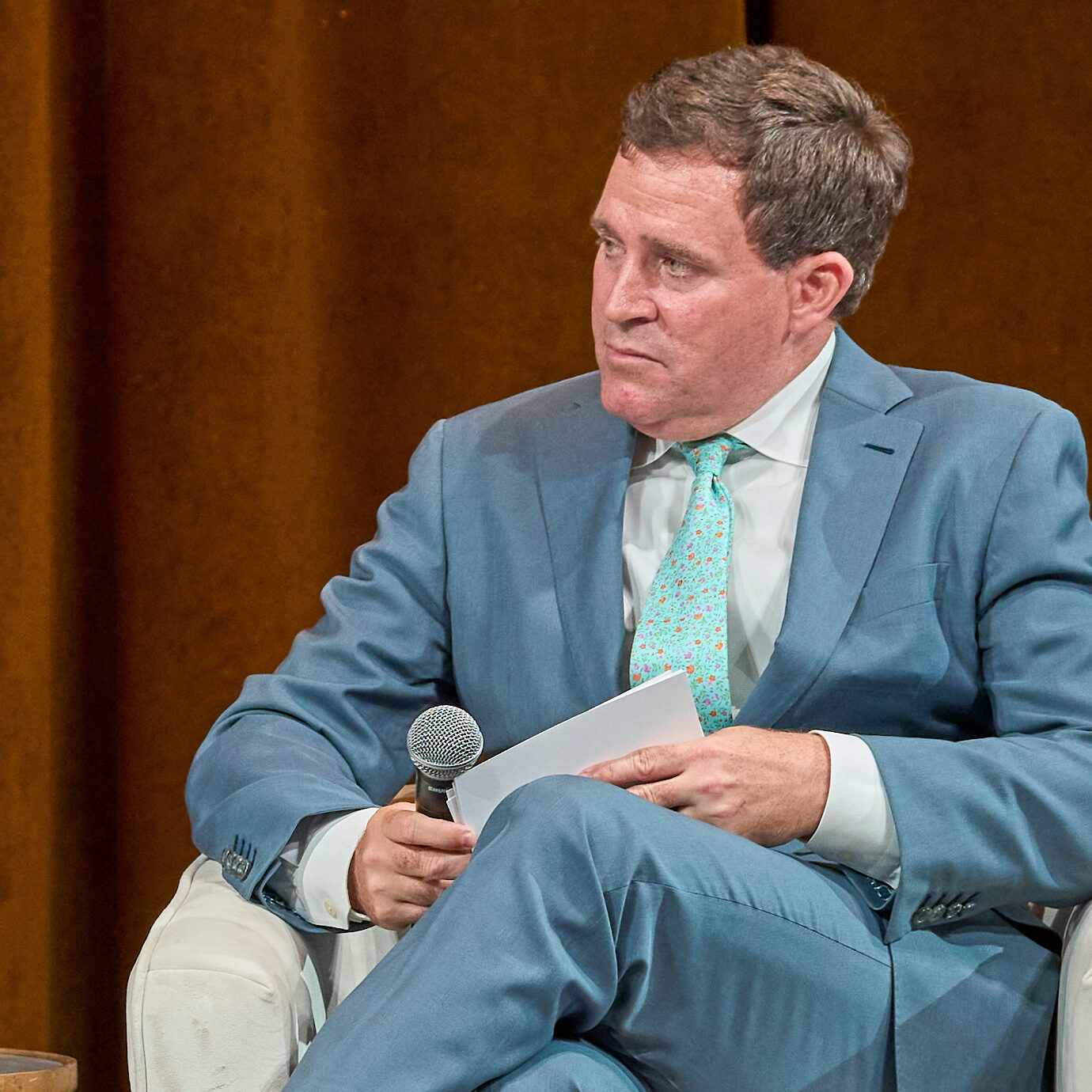
“Regions that focus on sustainability will also become more competitive.”
Dan Helfrich
Chair and CEO, Deloitte Consulting LLP, and Business Vice Chair, Council on Competitiveness
What has Tennessee done to catalyze this rapid development? In this panel, business leaders from across Tennessee discussed how the state has transformed itself into a hub of industry, manufacturing and, increasingly, innovation. Based on their experience and leadership in building workforces and production within the state, the leadership panel identify several “pillars of innovation” that have influenced the region’s economic dynamism, and they explored how others can learn from their experiences, and build on these pillars for growth and prosperity.
To build a prosperous economy that creates jobs and attracts investment, the business environment needs to be innovative. As Pablo Di Si, President and CEO of Volkswagen Group of America emphasizes, innovation is the seed that grows other opportunities throughout an economy: “I always say that anybody can bend metal, but not everybody can design a vehicle. So, if you have the knowledge, if you have the innovation, the manufacturing jobs will follow.”
Innovation grows regional economies by identifying challenges and creating new businesses to solve them. Within organizations, innovation improves productivity through new processes or product lines. This creates value, wealth, and new jobs, all of which are important for the strength of communities. But how does a region foster greater innovation?
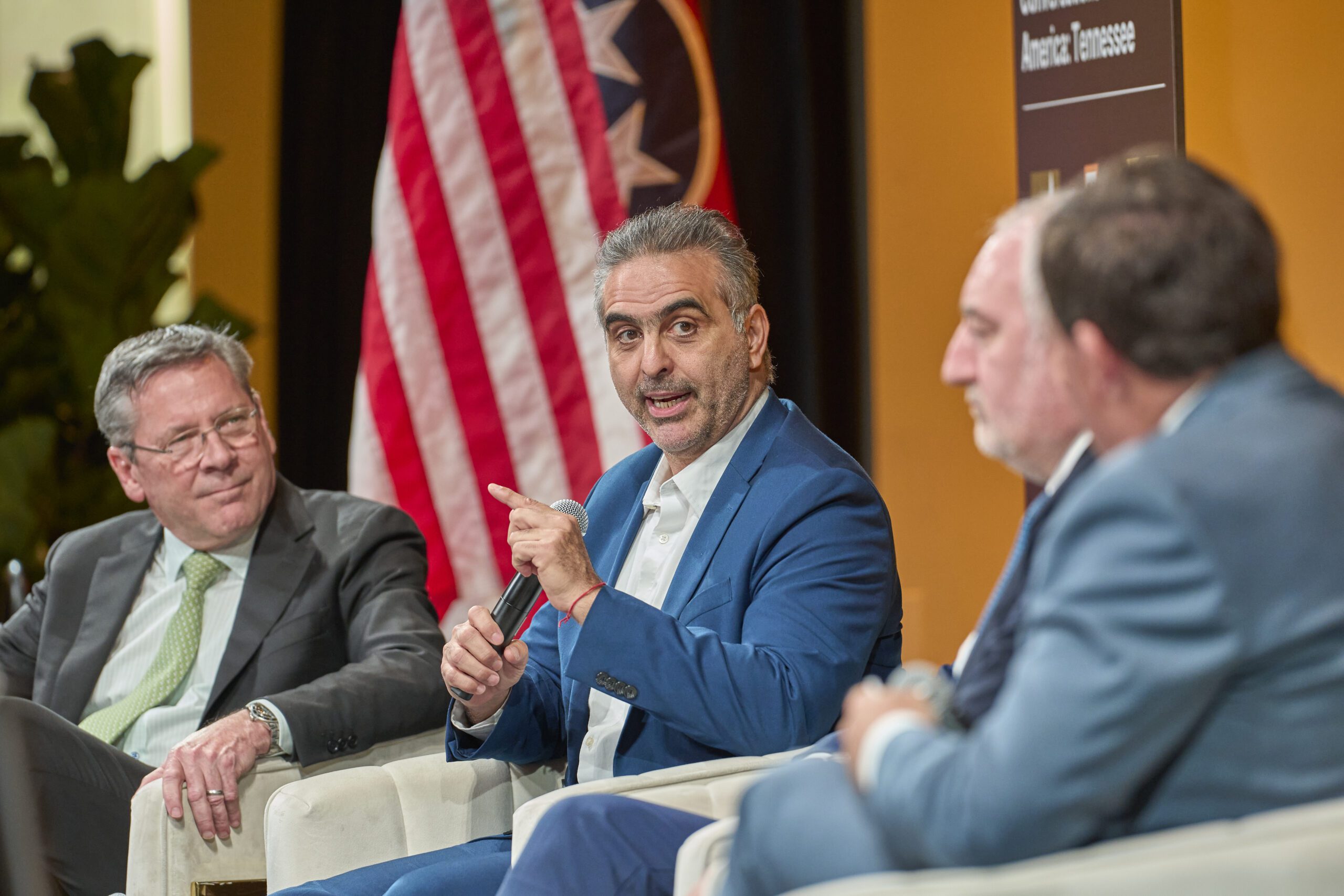
“I always say that anybody can bend metal, but not everybody can design a vehicle. So, if you have the knowledge, if you have the innovation, the manufacturing jobs will follow.”
Pablo Di Si
President & CEO, Volkswagen Group of America; CEO of Volkswagen Brand North American Region
One answer from the panel: cross-sectoral collaboration. There is an interdependent relationship between academia and business across Tennessee that is a supportive, driving force for new innovations. For example, the automotive manufacturing and mobility hub maturing in Tennessee is possible because of the regional ecosystem made up of transportation infrastructure, talent, energy, research and development, a business-friendly environment and incentives, a culture of collaboration, and other factors oriented to supporting the industry’s special needs. The ecosystem brings stakeholders together, along the value chain, forging collaboration between businesses, academic institutions, national laboratories, and government entities. This collaboration drives discovery and allows rapid scaling of those discoveries for the benefit of the regional and national economy, as well as the businesses making up the mobility industrial base in Tennessee.
To drive further innovation, academics and research institutions need to communicate and partner with businesses to better understand the challenges each business faces and determine how to implement successfully and to scale solutions. As Chairperson of Nissan Americas Jérémie Papin recounted, large suppliers like his company can play a key role in coordinating how an idea can scale. “There is plenty of capital available for a good idea, but [large suppliers] can help by solidifying revenue streams or making a very concrete road to scale, which is basically going to be the make-or-break of any startup.”

“We want to be a go-to company for the best people, the best students and teachers. We want to bring a sense of reality into the classroom. We want bright minds to work on solving the problems that we have.”
Jérémie Papin
Chairperson, Nissan Americas; Member of the Global Executive Committee and Sr. Vice President, Nissan Motor Co., Ltd.
Fortunately, this type of collaboration is happening in Tennessee. For example, the Tennessee Valley Authority (TVA), the sixth largest power supplier in the United Sates, and the U.S. Department of Energy’s Oak Ridge National Laboratory (ORNL) are actively conducting clean energy research important to significant drivers of the Tennessee economy, like the automotive and mobility businesses. The goals of such research are beneficial to all four automakers with large-scale presence in Tennessee, and for the citizens of Tennessee, as the research is looking to develop more sustainable automotive technologies and processes.
Building a collaborative environment for innovation only goes so far without the talent to drive forward new ideas. A workforce equipped with skills relevant to technology-heavy industries will scale the new ideas born from collaborations. For the future development of a region, innovators cannot solely rely on importing workers from other states or from around the world to fulfill their demands. Instead, the panelists stressed that a region needs to train its local, indigenous workforce to align with dynamic industry demands.
Tennessee has three R1 research universities, which are universities known for extensive research facilities, high levels of research funding, and making significant contributions to academic scholarship and doctoral education. These include the University of Tennessee, Knoxville, Vanderbilt University, and the University of Memphis. The R1 universities, along with technical and community colleges, as well as other four-year institutions are working diligently to upskill and reskill the state’s workforce to meet the evolving demands of industry. Often, they are doing this in partnership with industry. For example, Nissan is working with the Tennessee Centers for Applied Technology to help guide their curriculum towards training more Tennesseans in generative AI rather than traditional mechanical skills.
To build a workforce for technology-heavy industries, education systems must develop pathways to attract young people into engineering programs and fields. Pablo Di Si of Volkswagen commented young people will not commit to studying engineering solely on the merits of engineering. Instead, early in a young person’s life, they should be exposed to engineering through challenges and games to provoke their interest in the field. Gamify engineering, Di Si suggested, is an approach that could attract more young people into the field.
Continued, sustained investment in state infrastructure is a lynchpin for long-term workforce development and cross-sector collaboration. Paolo Ferrari, Joint Global COO and Global Chief Digital Transformation Officer of Bridgestone Corporation, understands long-term investments can be politically difficult when short-term factors can help win elections, but he explained Bridgestone makes its investment decisions based on a region’s perceived long-term viability. “Bridgestone makes investments thinking 20, 30 years from now. You do not make $10 billion investments on just a tax break for a couple of years.”
The panel then highlighted developing specialized areas of excellence is one of the best ways to reduce a region’s investment risk. The agglomeration of excellence and resources can attract both more suppliers and buyers, ensuring suppliers have a constant stream of customers. The increased concentration of buyers, in turn, attracts more suppliers, creating an even greater concentration of expertise in a region, boosting competition, and further strengthening the region’s supply chains. As Paolo Ferrari stated, “It is more important to make sure that in certain places we have hubs, scale—an ecosystem. I was reading about Oracle moving to Nashville. Of course, that is great news. And why? The company’s leadership mentioned that a key reason is to be closer to Nashville’s healthcare hub. There’s this concept that you want to be in a hub where you can have scale, you can connect to the ecosystem.
In addition to having a hub of producers, policymakers need to support the overall innovation ecosystem by investing in infrastructure to support specific areas of excellence. For example, FedEx’s growth as a global transportation, e-commerce, and business services company is tightly coupled to its Memphis location, which boasts tremendous access to people and markets through rail, roads, air, water and, increasingly vital, fiber. As emphasized by Rob Carter, Chief Information Officer of FedEx Corporation, a key component of Tennessee’s success has been its connectivity. By having the infrastructure to support an interconnected supply chain, Tennessee has expanded its production reach globally.
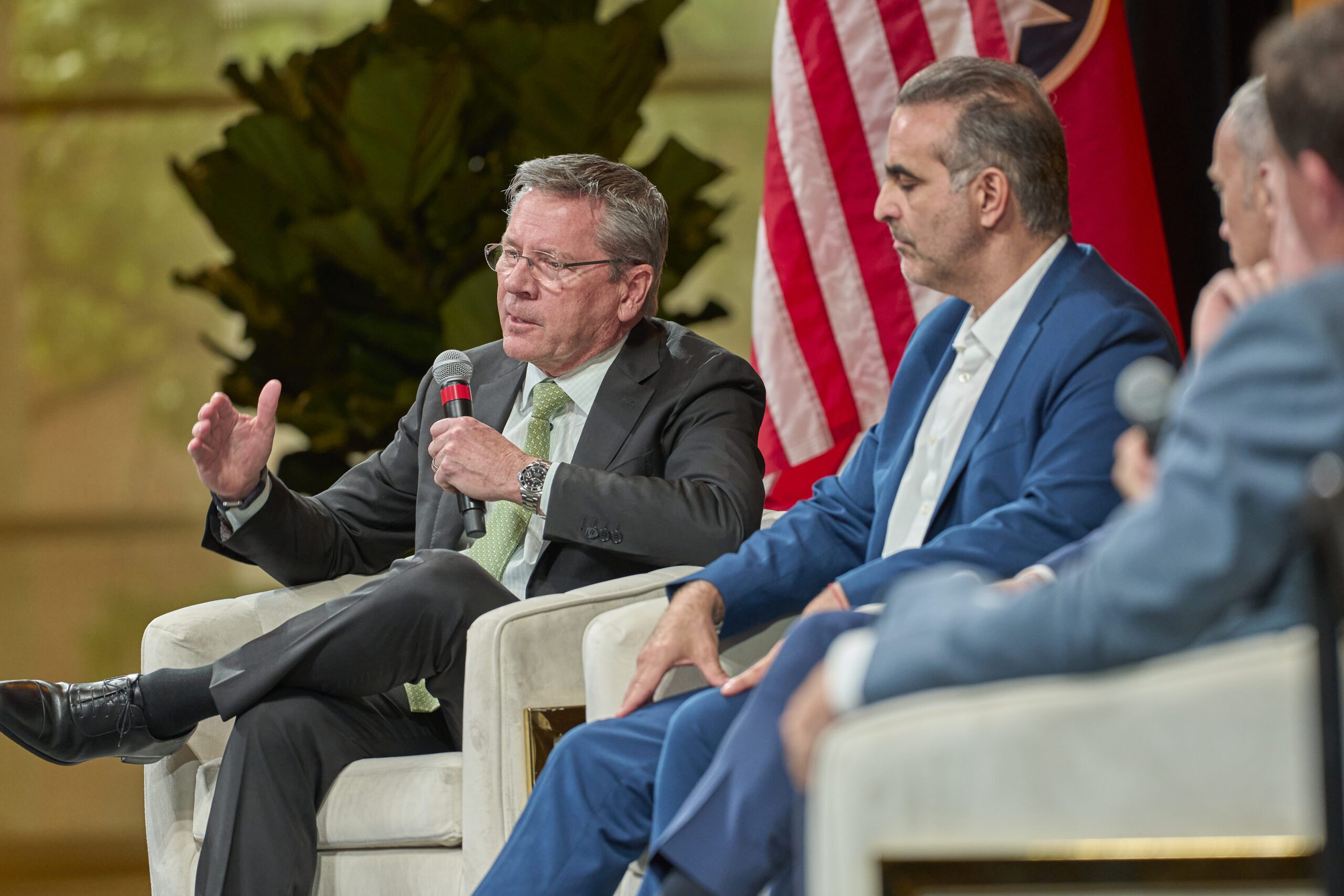
“Connectivity has always been critical to the development and evolution of trade and value creation, from the Roman roads and the silk roads, and onto shipping lanes. In Tennessee, we are blessed with that centrality. The international airport in Memphis is always either the first or second largest air cargo airport in the world.”
Robert (Rob) Carter
Executive Vice President, FedEx Information Services and Chief Information Officer, FedEx Corporation
Policymakers can support the development of regional hubs and attract long-term investment from organizations looking to innovate by investing in and maintaining existing or new specialized infrastructure. For example, Jérémie Papin of Nissan, cited how Tennessee’s charging network system in Tennessee has been a boon to the proliferation of electric vehicles throughout the state.
The panel of global leaders also emphasized the increasingly important competitive advantage of sustainable operations and products. As Bridgestone’s Ferrari succinctly said, “what’s good for society is good for business.” According to the panel, for regions to become hubs of innovation, they need to be sustainable. For example, designing tires that last longer not only reduces waste but also results in a better-functioning final product. Volkswagen’s Di Si discussed how making more efficient vehicles at Volkswagen both reduced costs and made their cars more sustainable. “When you reduce the weight of the vehicle, you use fewer materials, you produce less CO₂, and you become more competitive,” Di Si said.
Sustainability is crucial at every step of the production process, so companies must integrate it into their operations and product development processes to succeed. By making products more sustainable, producers can also enhance their efficiency and competitiveness. For example, Volkswagen has partnered with Electrify America, a company that provides charging for electric vehicles through solar panels. Through this partnership, Volkswagen is in the process of installing solar panels on the rooftops of all its dealerships.
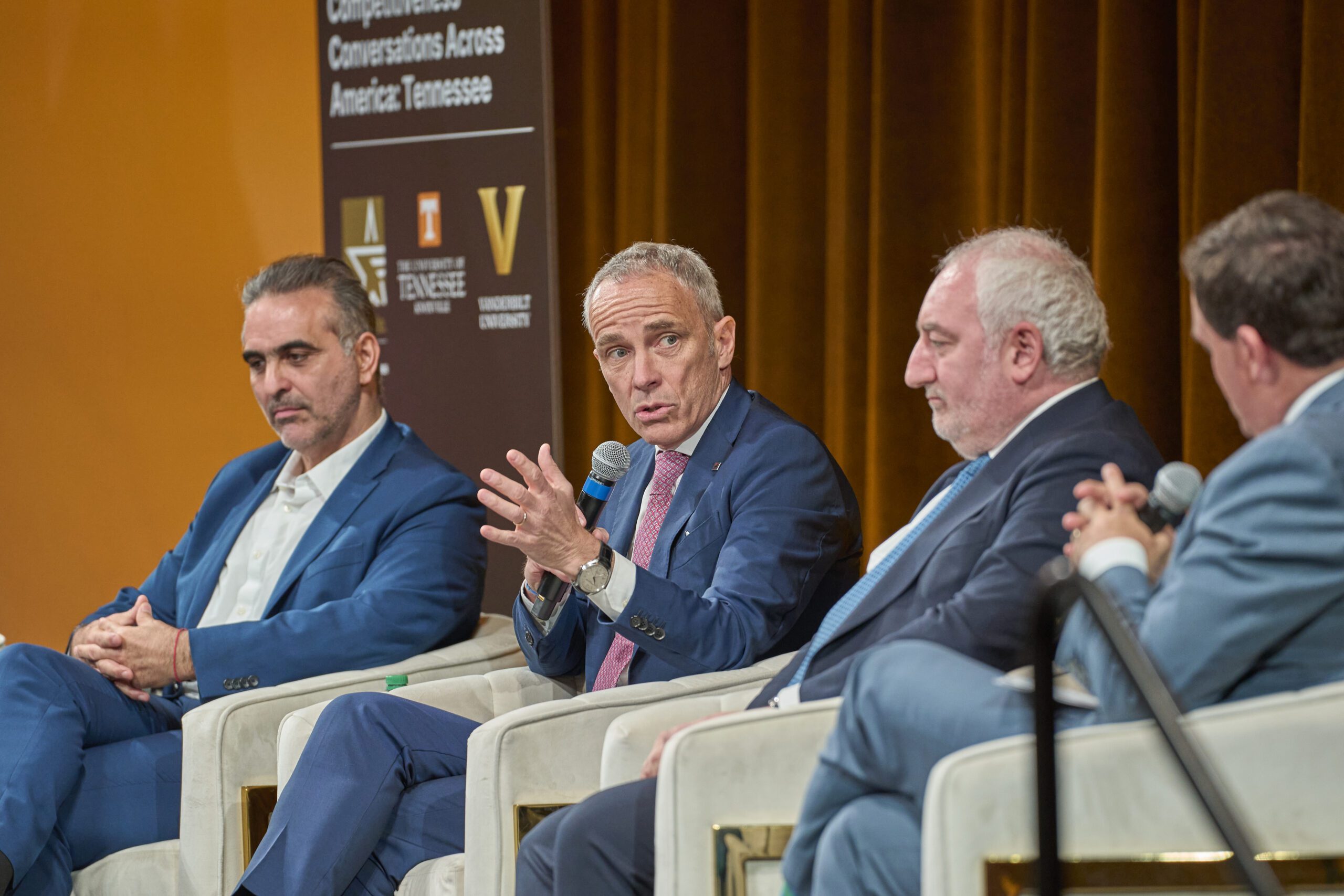
“I believe strongly in the concept of the economy of ecosystems. And, of course, there are ecosystems in healthcare around Nashville and across Tennessee. We have one in mobility as well. It is an ecosystem of solutions and parts providers, large global original equipment manufacturers, and massive fleet companies. The ecosystem works together on converging interests, purposes, and platforms, whether they are business platforms or digital platforms. But we need a glue. And I think the glue is partially technology and data.”
Paolo Ferrari
Joint Global COO and Global Chief Digital Transformation Officer, Bridgestone Corporation; Chief Executive Officer, Bridgestone West; Executive Chairman, Bridgestone Americas; Chairman, BSEMEA (formerly BSEMIA) Supervisory Board
As a concluding point, the panel noted that all the aforementioned pillars of innovation—innovative culture and collaboration, talent, investment, regional specialization, and sustainability—are amplified through the use of digital technology. Innovation is not just a matter of improving products. Innovation is also about improving processes, and digital technology has allowed for people and organizations to operate more efficiently. As Bridgestone’s Ferrari noted, it has become the glue that connects different parts of the economic ecosystem together. Today, almost every company is a technology company. With greater access to information, firms can ensure their products are more efficient and sustainable. Bridgestone’s creation of a digital twin for electric vehicles, for example, allows for better fleet management at a potentially lower cost. And the creation of an interconnected data infrastructure allows firms to operate more efficiently and sustainably.
